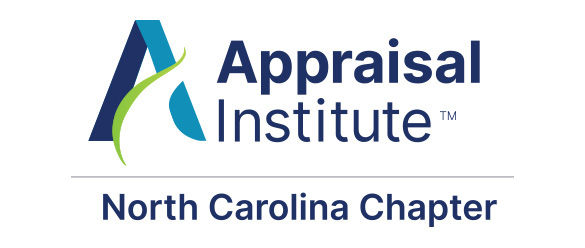The Appraisal Institute designated 72 members in January, including; 1 who received MAI AND SRA designations; and 42 who received MAI designations; 7 who received SRA designations; 17 who received AI-GRS designations; 5 who received AI-RRS designations.
Congratulations to NC Chapter Members Richard Duane Earley, MAI and William (Bill) W. Johnson, MAI.
By Michael Gerrity
According to JLL's latest research, Flexing Their Muscles: Markets to Watch in 2019, the U.S. office market is poised to take on significantly more office flex space in the coming year.
"The world's top companies recognize there is no one-size-fits-all flexible approach, just like there's no one type of worker," said Doug Sharp, President, JLL Corporate Solutions, Americas. "Flexible space options allow workers and teams to select the right space to perform work each day in a location that will help realize their company's mission and their own ambitions. This is one of the reasons we see so much runway for flex space in U.S. office markets - it addresses several core needs for employers and employees alike."
Flexible space inventory (including coworking space, incubators and other short-term space options) has grown at an annual rate of 23 percent since 2010. In 2018, flexible space accounted for nearly two-thirds of the country's office market occupancy gains. JLL predicts it will comprise approximately a third of the market by 2030, compared to less than 5 percent today.
Click here to view the list.
Mortgage banking and investment sales experts at Berkadia are preparing for interest rate hikes and adopting new technologies this year, according to the firm’s 2019 Outlook Powerhouse Poll. The proprietary poll, conducted in December 2018, collected insights from over 150 Berkadia investment sales brokers and mortgage bankers across 60 offices to assess 2018 commercial real estate activity and opportunities for the year ahead.
Despite four interest rate increases throughout 2018, investment sales brokers and mortgage bankers alike agree that the commercial real estate industry ended the year on a high note—82 percent said that deal volume either met or exceeded their expectations for the year. However, Berkadia’s professionals are keeping a close eye on interest rates in 2019. Eighty-one percent of mortgage bankers and 83 percent of investment sales brokers have it on their radar for the year ahead.
Click here to read more.
By Kelsey Ramirez
The Federal Housing Finance Agency revealed it will no longer defend its own structure, calling itself unconstitutional.
Read More
The Mortgage Bankers Association this morning reported December mortgage applications for new homes fell by 13 percent from November and by 6.1 percent from a year ago.
In a separate report yesterday, the National Association of Home Builders reported its January Housing Market Index stabilized amid lower interest rates.
Read More
By Patricia Kirk
The outlook for industrial real estate in 2019 is bright, with continued strength in property fundamentals, demand outpacing supply, rent growth and strong absorption squeezing already tight vacancy rates.
Read More
2019 Appraisal Institute President Stephen Wagner, MAI, SRA, AI-GRS, outlines the Appraisal Institute’s priorities for the year in the organization’s latest video.
As the Appraisal Institute continues to serve as the global valuation profession’s thought leader, the organization remains at the forefront of the most pressing issues facing appraisers today.
Read More
The Appraisal Institute designated 26 members in December, including five who received their MAI designations, seven who received their SRA designations, 12 who received their AI-GRS designations and two who received their AI-RRS designations.
Click here to view.
President's Letter - Farewell
Dear fellow members of NCAI:
It is with mixed emotions that I submit to you this fourth and final President’s Report. As my tenure as President comes to a close, I am excited to begin the next chapter in my life, but at the same time melancholic that my term has to end. While not without its challenges, my time on the Executive Committee was among the most rewarding experiences of my life, both personally and professionally, because of members like you. I want to extend my sincere gratitude to the North Carolina Chapter for entrusting me with the great honor and privilege to serve what I believe is by far the best Chapter in the Appraisal Institute.
Read More
The Appraisal Institute on Jan. 9 announced the recognition of one individual as a "Volunteer of Distinction" for the fourth quarter.
Read More
The Appraisal Institute announced Jan. 9 that it is accepting nominations for the Lifetime Achievement Award and the Outstanding Service Award, two ways AI recognizes some of its most deserving professionals. Nominations for both awards are due May 24. Awards will be presented at the Appraisal Institute's 2019 Annual Conference July 22-24 in Denver.
Click here to learn more.
By Michael Tucker
After several quarters of record-breaking high rents and low vacancies, the industrial real estate sector will likely "pause" soon, said JLL, Chicago. But it said that could be good news for smart owners, investors and occupiers.
Read More
FEMA Brings Back Flood Insurance Policies During Lingering Government Shutdown
By Caroline Basile
The Federal Emergency Management Agency announced late Friday that it will resume selling and renewing flood insurance policies, rescinding its initial ruling that the National Flood Insurance Program cannot be renewed amid the ongoing government shutdown.
Read More
The Appraisal Institute and 15 other organizations submitted a letter Dec. 21 to the Federal Reserve, the Federal Deposit Insurance Corp. and the Office of the Comptroller of the Currency requesting that they hold a public meeting as part of the process to determine whether to increase the residential appraisal threshold from $250,000 to $400,000.
Click here to read the letter.
Dear NCAI Member,
I hope 2018 was a great year for you, your family, and your business, and I wish you a healthy and prosperous New Year in 2019!
Read More
By Jessica Guerin
After months of uneven recovery following last October’s program changes, reverse mortgage volume has fallen to a low it hasn’t seen since 2004.
